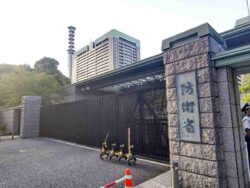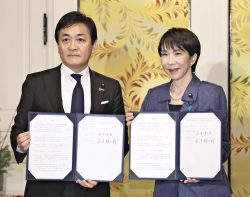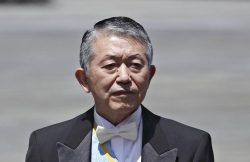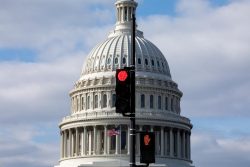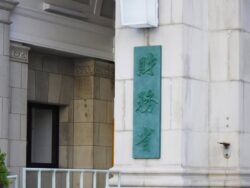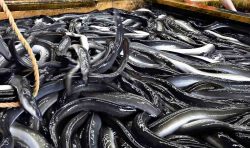15:00 JST, March 30, 2025
The food security system must be strengthened so that the people can live their lives free from anxiety. The current situation — which is sometimes described as a “rice riot in the Reiwa era” spurred by the prolonged high prices of the grain — can be said to serve as a stark reminder of the importance of heightening food security.
Specific measures to boost the production base must be formulated under the new basic plan for agriculture.
The Agriculture, Forestry and Fisheries Ministry has compiled the new Basic Plan for Food, Agriculture and Rural Areas, which will serve as a guideline for agricultural policy over the next five years. Soon to be approved by the Cabinet, the plan is designed to develop overseas markets and focus on structural reform.
The plan calls for almost doubling the overseas earnings of the food industry to ¥3 trillion in 2030 and increasing the value of exports of agricultural, forestry and fishery products and food from ¥1.5 trillion to ¥5 trillion.
The calorie-based food self-sufficiency rate is set at 45% by fiscal 2030, the same level as in the previous plan.
However, this target has not been achieved even once since it was set in 2000. The actual result for fiscal 2023 stood only at 38%. If effective measures are not taken, the targets and plans will end up being just empty words.
In the new basic plan, the promotion of exports is positioned as a key measure to strengthen the agricultural production base. If there is reliance on just the domestic market, which is shrinking due to the declining population, Japan’s production base will only continue to weaken, and the stable supply of food will be threatened. It is appropriate to focus on overseas markets.
However, there is a grave shortage of people to support the nation’s agriculture. The population is aging rapidly, and it is estimated that it will decrease sharply over the next 20 years. To increase the number of people who go into farming, it is essential to shift the nation’s agriculture to a profitable business.
Under the new plan, the aim is to increase the value of rice exports — the core of the strategy — in 2030 to about ¥90 billion, nearly seven times the level in 2024, and to increase the volume of rice exports by about eight times to 350,000 tons.
The risks threatening food security, such as global warming and more severe natural disasters, are increasing. Even if unforeseen circumstances arise, Japan can secure rice by diverting rice intended for exports to domestic use.
However, the hurdles to achieving these targets are high. This is because Japanese rice is less cost-competitive than rice from the United States and from emerging and developing countries with low labor costs.
The ministry is promoting a switch to high-yield varieties and the spread of so-called smart agriculture, which utilizes cutting-edge technology, in 30 model production areas across the country. If the rice export strategy is successful, it will be a useful reference for other agricultural products. Measures such as financial support should also be developed.
To increase the rice supply, the government should also consider reviewing the rice acreage reduction policy, which is said to be continuing in practice.
The overseas popularity of washoku Japanese cuisine should be capitalized on. It is important to work with organizations such as the Japan External Trade Organization to identify needs and develop markets overseas.
(From The Yomiuri Shimbun, March 30, 2025)
"Editorial & Columns" POPULAR ARTICLE
-
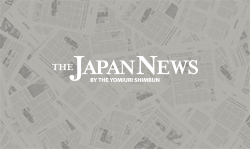
Violations of Subcontract Law: Major Automakers Must Eliminate Old Practices
-

Local Governments’ Tax Revenues: Devise Ways to Correct Imbalances in Tax Sources
-

Heavy Rains in Asia: Support for Victims, Flood-Control Measures Urgently Needed
-

5 Japanese Business Dinner Mistakes to Avoid — and What They Taught Me About Business in Japan
-

New Nuclear Threat: China Seeking to Follow U.S., Russia in Military Expansion
JN ACCESS RANKING
-

Keidanren Chairman Yoshinobu Tsutsui Visits Kashiwazaki-Kariwa Nuclear Power Plant; Inspects New Emergency Safety System
-
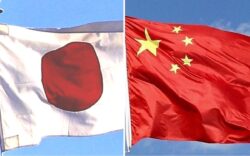
Imports of Rare Earths from China Facing Delays, May Be Caused by Deterioration of Japan-China Relations
-

University of Tokyo Professor Discusses Japanese Economic Security in Interview Ahead of Forum
-
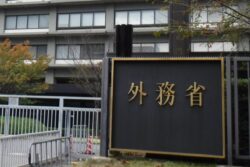
Japan Pulls out of Vietnam Nuclear Project, Complicating Hanoi’s Power Plans
-

Govt Aims to Expand NISA Program Lineup, Abolish Age Restriction






